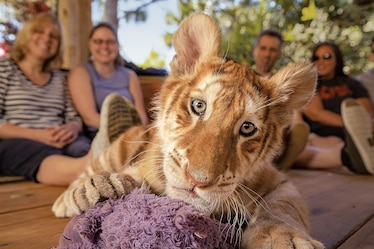
PHOTOGRAPH BY STEVE WINTER, NAT GEO IMAGE COLLECTION
How ‘Tiger King’ helped kill the industry it made famous
Landmark U.S. legislation bans cub petting, tiger selfies, and breeding big cats as pets. What does that mean for the thousands of captive cats?
The lucrative cub-petting industry that the Netflix docuseries Tiger King thrust into the spotlight is now illegal in the United States.
The Big Cat Public Safety Act—which applies to lions, tigers, leopards, cheetahs, jaguars, cougars, or any hybrids of those species—was signed into law today with the president’s signature. The bill prohibits the practice of cub petting and any new breeding of big cats for private possession. It also makes it illegal for members of the public to have close contact with the animals, such as taking selfies while bottle-feeding tiger cubs.
Licensed zoos, sanctuaries, and academic institutions with big cats may continue to operate. Facilities may still exhibit their animals but cannot offer the public hands-on experiences. Private owners of big cats may also keep their animals, but no further breeding will be allowed, and they cannot obtain more cats. Owners must notify the U.S. Fish and Wildlife Service about their animals within 180 days of the law’s passage. Read Full Article……
Complete National Geographic Article BY DINA FINE MARON – PUBLISHED DECEMBER 20, 2022
Big Cat Public Safety Act – H.R. 263 – 117th Congress (2021-2022)
